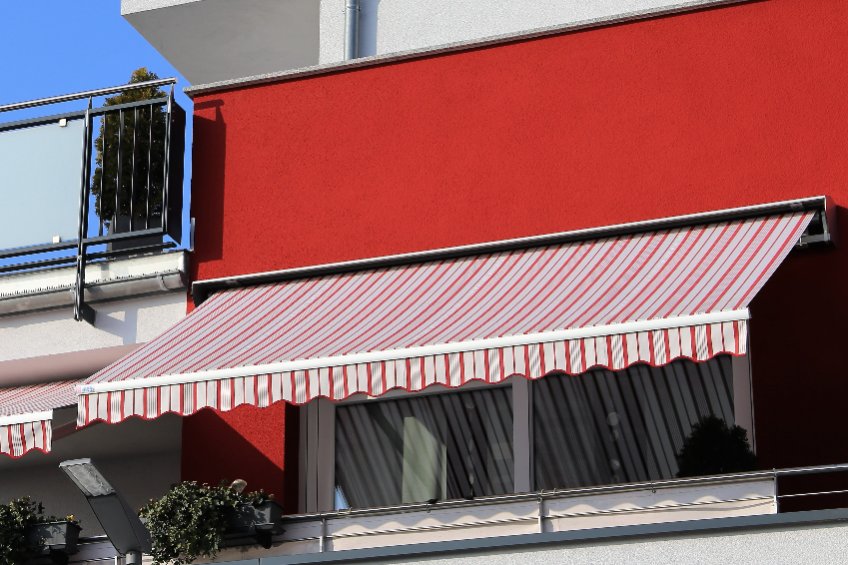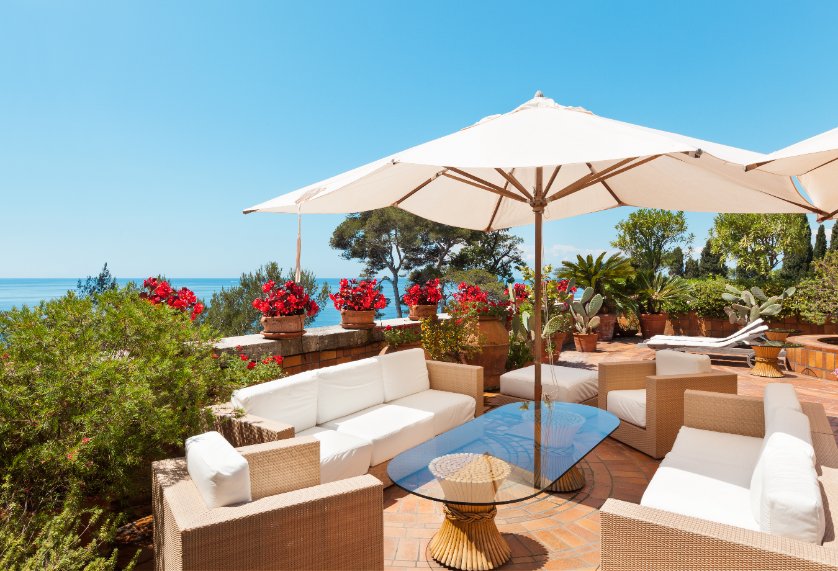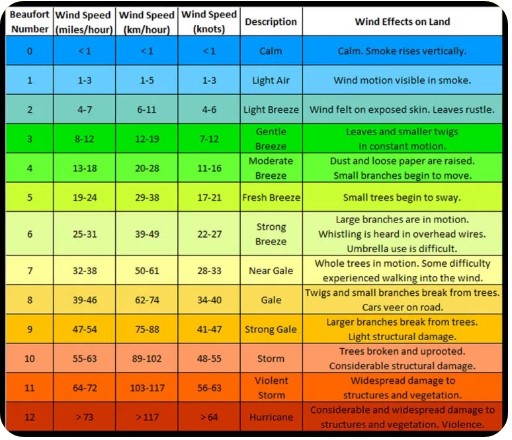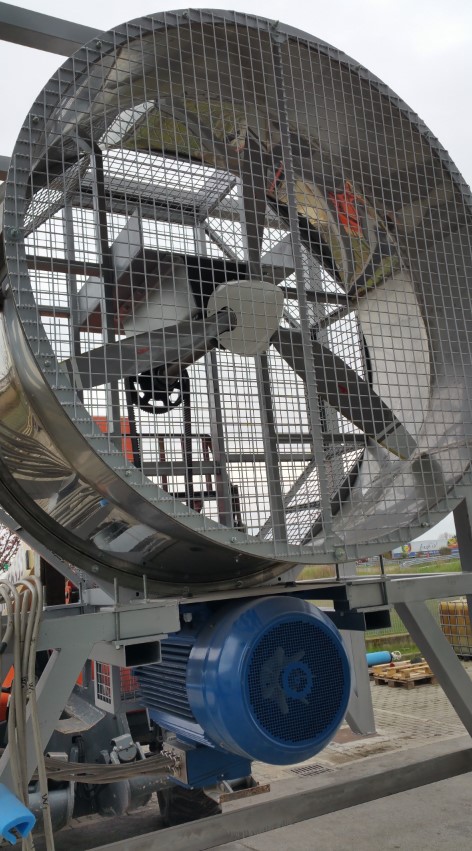Wind load resistance standard for market umbrellas
(Pubbl. 16/01/2023)Tag:
safety
As we are aware, external blinds and shutters must obtain CE marking, making it mandatory for manufacturers to issue a declaration of performance for the resistance to wind load, a risk factor for the user and therefore directly related to product safety in use.
Shutters include venetian shutters, wing shutters, roller blinds, roller shutters, as well as folding-arm awnings, vertical awnings, horizontal awnings, insect screens and brise soleil.
On 18 July 2013 UNI implemented European standard UNI EN 1932:2013 “External blinds and shutters – Resistance to wind loads – Method of testing and performance criteria” that specifies the test method to evaluate the wind resistance of shutters and the respective performance classification criteria.


But do market umbrellas, those which we see placed along the streets of our cities to shade the customers of bars, kiosks and restaurants from the sun, belong to this category? Are they subject to compulsory CE marking and therefore required to issue a declaration of performance for the resistance to wind load?


Even though they are just as hazardous as external blinds and shutters in the event of strong winds, incredibly, the answer is NO: these products cannot be directly linked to normative or statutory requirements. We have used the term ‘directly linked’, because in the event of an accident, the unfortunate victim will probably come ‘knocking’ and ask for explanations as to the ‘whys and wherefores’ from the owner of the premises, the installer or salesman, and eventually the manufacturer who placed the product on the market. How can you test the wind load performance of these actually extremely-common products?
In Europe there are no standards covering the resistance to wind load of this particular product type, whilst in the USA a standard was introduced in 2021 dealing precisely with this issue, the ASTM F3512.
 In its introduction, the document advises that:
In its introduction, the document advises that:
Market umbrellas (MUs) are commonly used as protection against rain, sun, or other potential weather in home, recreation, and commercial business settings. The deleterious effects of a market umbrella being blown over or broken by wind forces can range from acute injury, such as cuts or bruises, to blunt force trauma, such as concussions or broken bones.
[…] This standard is intended to provide standardized methods for evaluating the wind safety and durability of MU using a wind tunnel and rating the performance of the MU on a standardized scale. This standard may also be used by MU manufacturers to assess current or proposed designs.
The basis of the method proposed by the American standard is quite simple and calls for two evaluations:
METHOD A (Wind Safety) determination of the maximum wind speed that the umbrella can withstand without damage (up to 120 km/h);
METHOD B (Wind Durability) determination of the wind speed that the umbrella can withstand in a use environment without damage (up to 120 km/h) (Wind Durability) for 30 minutes, the average length of a thunderstorm.
Product performance is then rated using the Beaufort Scale, as shown in Annex A1 to the standard:
The most crucial point of the American standard regards the fact that the test is expected to be performed in a wind tunnel with costs that would be much too high for what is inherently a fairly inexpensive product.
As an alternative, the Istituto Giordano Security and Safety Laboratory offers the use of a wind generator comprising an aircraft propeller blade of 2 m diameter that can generate wind velocity of up to 140 km/h, therefore matching the speeds requested by the American standard.

Furthermore, this generator complies with the requirements of another American standard used to assess the watertightness of windows and doors during gusts of wind (AAMA 501.1) and creates probably harsher boundary conditions that those created by linear wind flow.
CONTATTI
Andrea Bruschi
Tel. 0541 322.388
E-mail a.bruschi@giordano.it
Shutters include venetian shutters, wing shutters, roller blinds, roller shutters, as well as folding-arm awnings, vertical awnings, horizontal awnings, insect screens and brise soleil.
On 18 July 2013 UNI implemented European standard UNI EN 1932:2013 “External blinds and shutters – Resistance to wind loads – Method of testing and performance criteria” that specifies the test method to evaluate the wind resistance of shutters and the respective performance classification criteria.


But do market umbrellas, those which we see placed along the streets of our cities to shade the customers of bars, kiosks and restaurants from the sun, belong to this category? Are they subject to compulsory CE marking and therefore required to issue a declaration of performance for the resistance to wind load?


Even though they are just as hazardous as external blinds and shutters in the event of strong winds, incredibly, the answer is NO: these products cannot be directly linked to normative or statutory requirements. We have used the term ‘directly linked’, because in the event of an accident, the unfortunate victim will probably come ‘knocking’ and ask for explanations as to the ‘whys and wherefores’ from the owner of the premises, the installer or salesman, and eventually the manufacturer who placed the product on the market. How can you test the wind load performance of these actually extremely-common products?
In Europe there are no standards covering the resistance to wind load of this particular product type, whilst in the USA a standard was introduced in 2021 dealing precisely with this issue, the ASTM F3512.
 In its introduction, the document advises that:
In its introduction, the document advises that:Market umbrellas (MUs) are commonly used as protection against rain, sun, or other potential weather in home, recreation, and commercial business settings. The deleterious effects of a market umbrella being blown over or broken by wind forces can range from acute injury, such as cuts or bruises, to blunt force trauma, such as concussions or broken bones.
[…] This standard is intended to provide standardized methods for evaluating the wind safety and durability of MU using a wind tunnel and rating the performance of the MU on a standardized scale. This standard may also be used by MU manufacturers to assess current or proposed designs.
The basis of the method proposed by the American standard is quite simple and calls for two evaluations:

METHOD A (Wind Safety) determination of the maximum wind speed that the umbrella can withstand without damage (up to 120 km/h);
METHOD B (Wind Durability) determination of the wind speed that the umbrella can withstand in a use environment without damage (up to 120 km/h) (Wind Durability) for 30 minutes, the average length of a thunderstorm.
Product performance is then rated using the Beaufort Scale, as shown in Annex A1 to the standard:
The most crucial point of the American standard regards the fact that the test is expected to be performed in a wind tunnel with costs that would be much too high for what is inherently a fairly inexpensive product.
As an alternative, the Istituto Giordano Security and Safety Laboratory offers the use of a wind generator comprising an aircraft propeller blade of 2 m diameter that can generate wind velocity of up to 140 km/h, therefore matching the speeds requested by the American standard.

Furthermore, this generator complies with the requirements of another American standard used to assess the watertightness of windows and doors during gusts of wind (AAMA 501.1) and creates probably harsher boundary conditions that those created by linear wind flow.
CONTATTI
Andrea Bruschi
Tel. 0541 322.388
E-mail a.bruschi@giordano.it

















 Do you need more information about our services?
Do you need more information about our services?